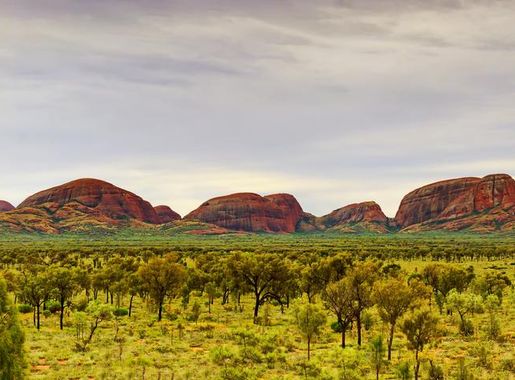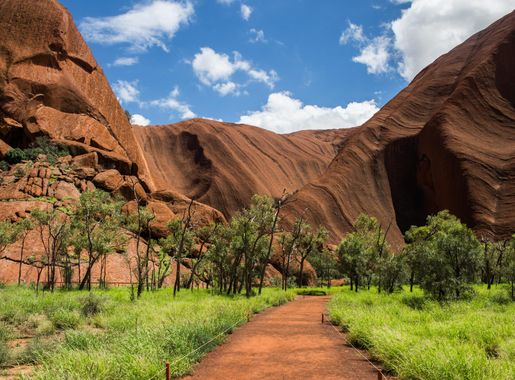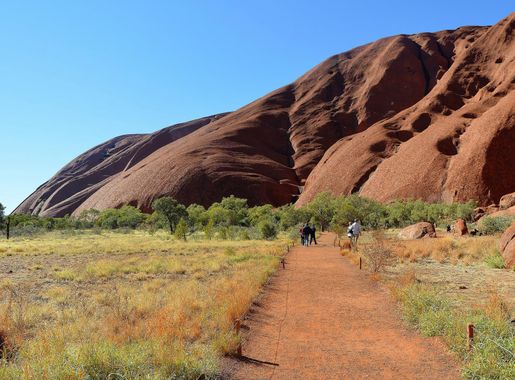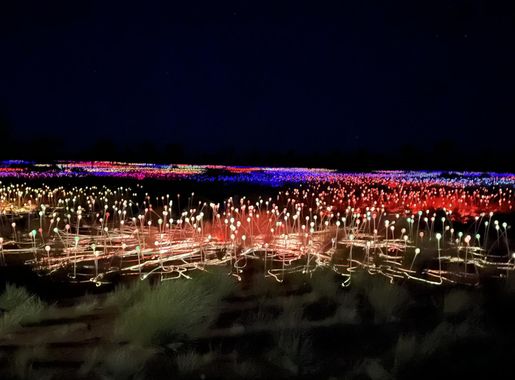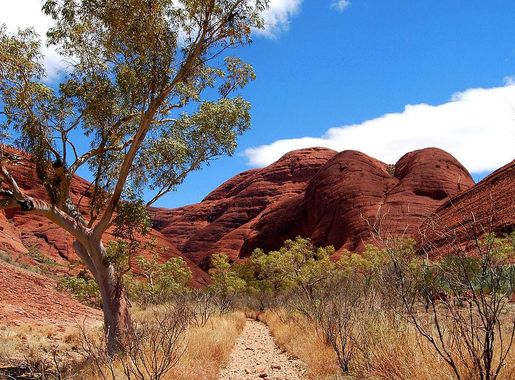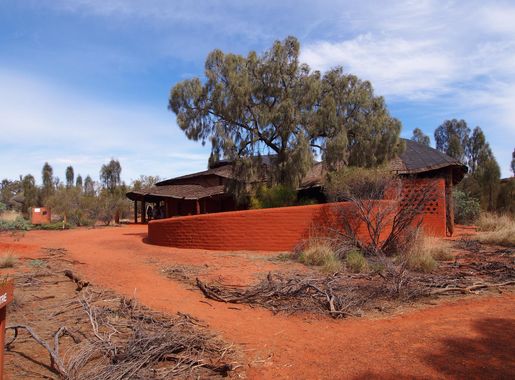
Uluru-Kata Tjuta National Park: A Sacred Desert Wonder
Explore the majestic Uluru-Kata Tjuta National Park, a UNESCO World Heritage site offering rich Aboriginal culture, stunning landscapes, and unique wildlife experiences.
Uluru-Kata Tjuta National Park is a place of profound beauty and cultural significance in Australia. Located in the heart of the Northern Territory, this UNESCO World Heritage site is home to the iconic Uluru, a massive sandstone monolith that rises dramatically from the desert floor. The park also features the striking rock formations of Kata Tjuta, known as the Olgas, which are a series of large, domed rocks that create a stunning landscape. The park is not only a geological marvel but also a cultural treasure. It is a sacred site for the Anangu people, who have lived in the area for tens of thousands of years. Visitors have the unique opportunity to learn about the rich Aboriginal culture through guided tours, storytelling, and traditional ceremonies. The park's cultural center offers insights into the history, art, and spirituality of the Anangu people. Nature lovers will be enchanted by the diverse flora and fauna that thrive in this arid environment. From vibrant wildflowers to rare animals like the mala, the park is a haven for wildlife enthusiasts. Hiking trails, such as the Uluru Base Walk and the Valley of the Winds at Kata Tjuta, provide breathtaking views and intimate encounters with the natural world. Whether you are watching the sunrise over Uluru or exploring the ancient rock art, Uluru-Kata Tjuta National Park promises an unforgettable adventure.
Local tips in Uluru-Kata Tjuta National Park
- Visit during the cooler months (May to September) for the most comfortable weather.
- Respect the cultural significance of Uluru by not climbing it, as requested by the traditional owners.
- Attend a guided tour to gain a deeper understanding of the Anangu culture and the park's history.
- Bring plenty of water, sunscreen, and a hat to stay hydrated and protected from the sun.
- Check out the sunset and sunrise viewing areas for spectacular photo opportunities.
Uluru-Kata Tjuta National Park: A Sacred Desert Wonder
Uluru-Kata Tjuta National Park is a place of profound beauty and cultural significance in Australia. Located in the heart of the Northern Territory, this UNESCO World Heritage site is home to the iconic Uluru, a massive sandstone monolith that rises dramatically from the desert floor. The park also features the striking rock formations of Kata Tjuta, known as the Olgas, which are a series of large, domed rocks that create a stunning landscape. The park is not only a geological marvel but also a cultural treasure. It is a sacred site for the Anangu people, who have lived in the area for tens of thousands of years. Visitors have the unique opportunity to learn about the rich Aboriginal culture through guided tours, storytelling, and traditional ceremonies. The park's cultural center offers insights into the history, art, and spirituality of the Anangu people. Nature lovers will be enchanted by the diverse flora and fauna that thrive in this arid environment. From vibrant wildflowers to rare animals like the mala, the park is a haven for wildlife enthusiasts. Hiking trails, such as the Uluru Base Walk and the Valley of the Winds at Kata Tjuta, provide breathtaking views and intimate encounters with the natural world. Whether you are watching the sunrise over Uluru or exploring the ancient rock art, Uluru-Kata Tjuta National Park promises an unforgettable adventure.
When is the best time to go to Uluru-Kata Tjuta National Park?
Iconic landmarks you can’t miss
Uluṟu-Kata Tjuṯa National Park
Discover the stunning landscapes and rich culture of Uluṟu-Kata Tjuṯa National Park, a must-visit destination for nature lovers and adventure seekers in Australia.
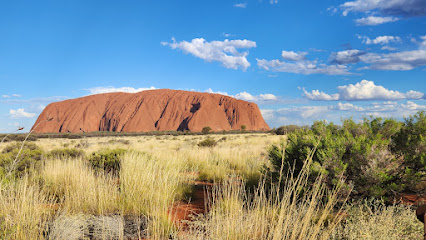
Uluru
Experience the breathtaking beauty and rich cultural heritage of Uluru, Australia's iconic sandstone monolith in the heart of the Northern Territory.
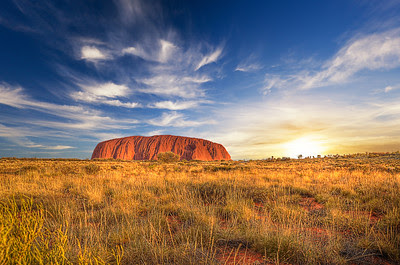
Uluṟu-Kata Tjuṯa Cultural Centre
Explore the Uluṟu-Kata Tjuṯa Cultural Centre, where Indigenous heritage and breathtaking landscapes unite for an unforgettable experience in Australia.

Talinguṟu Nyakunytjaku - Uluṟu Sunrise Viewing Area
Experience the breathtaking sunrise at Talinguṟu Nyakunytjaku, where nature and culture converge in a stunning display of Uluru's beauty.

Field of Light Uluru
Experience the magical Field of Light at Uluru, where art meets nature in a breathtaking display of color and creativity under the stars.
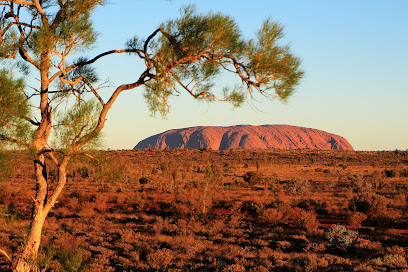
Uluṟu Sunset Viewing Area
Witness the breathtaking transformation of Uluṟu at sunset, a must-see natural wonder in Australia's Northern Territory.

Uluru Camel Tours
Discover the beauty of the Australian Outback with Uluru Camel Tours, offering unique camel rides and unforgettable experiences near Uluru.
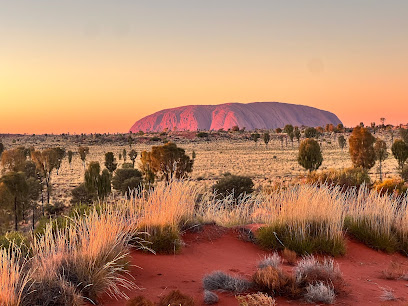
Uluṟu Coach Sunset Viewing Area
Experience the breathtaking beauty of Uluṟu at sunset, a must-see natural wonder in Australia's Northern Territory.
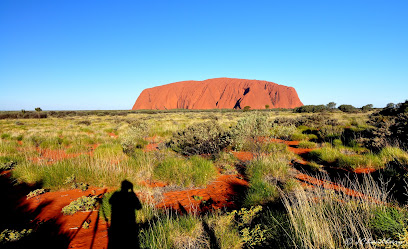
Kata Tjuta - Valley of the Winds
Explore the breathtaking landscapes of Kata Tjuta's Valley of the Winds, a premier hiking destination in Australia's Northern Territory.
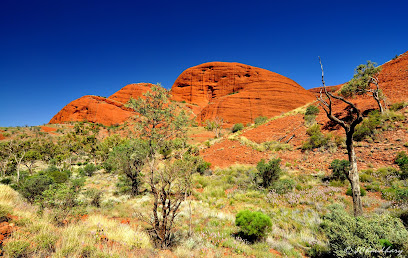
Kata Tjuṯa Dunes Viewing Area
Experience breathtaking views and rich cultural heritage at Kata Tjuṯa Dunes Viewing Area in Northern Territory, Australia.

Karu lookout
Discover the breathtaking Karu Lookout in the Valley of the Winds, a hiking paradise showcasing Australia’s stunning red rock formations and unique wildlife.
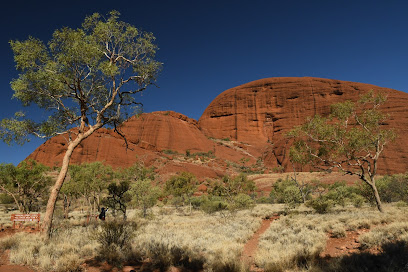
Kata Tjuta Viewing Area Carpark
Discover the breathtaking views and unique landscapes of Kata Tjuta at the Viewing Area Carpark, an essential stop for every tourist in the Northern Territory.

Imalung Lookout
Discover the stunning Imalung Lookout in Yulara, offering breathtaking views of Uluru and the enchanting Australian Outback.

Uluru Segway Tours
Experience the breathtaking landscapes of Uluru on a thrilling Segway tour, blending adventure with cultural discovery in Australia’s Red Centre.

Ewing Lookout
Discover the breathtaking beauty of Uluru from Ewing Lookout, where stunning views and rich cultural heritage await in the heart of the Australian Outback.
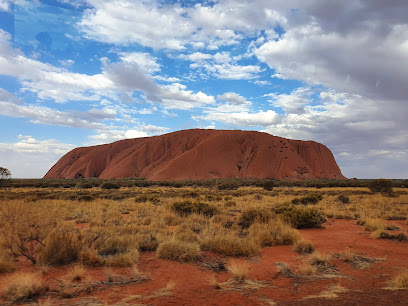
Unmissable attractions to see
Uluru
Explore the majestic Uluru, a sacred sandstone monolith and cultural treasure in the heart of Australia's Northern Territory.
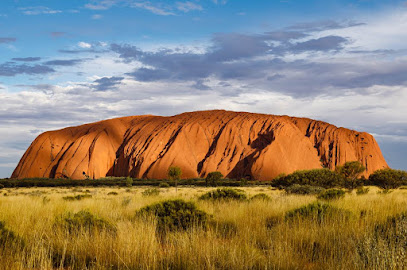
Field of Light Uluru
Discover the enchanting Field of Light at Uluru, where a mesmerizing display of illuminated spheres transforms the desert landscape into a breathtaking spectacle of color and creativity.

Kata Tjuta - Valley of the Winds
Experience the breathtaking beauty of Kata Tjuta's Valley of the Winds, a premier hiking destination in Australia's Northern Territory.

Professional Helicopter Services | Helicopter Tours Uluru | Uluru Tours | Ayers Rock Helicopter Tours
Discover the breathtaking beauty of Uluru from above with unforgettable helicopter tours, showcasing the stunning landscapes of the Northern Territory.

Walpa Gorge
Discover the beauty of Walpa Gorge in the Northern Territory, a breathtaking hiking area and tourist attraction rich in natural wonders and Indigenous culture.
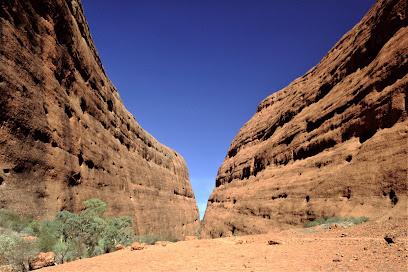
Karu lookout
Discover the breathtaking views and natural beauty at Karu Lookout, an essential stop in Uluru-Kata Tjuta National Park.
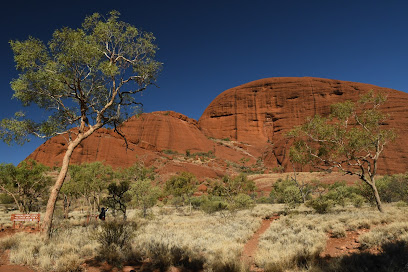
Imalung Lookout
Experience breathtaking views at Imalung Lookout, where the majestic Uluru and Kata Tjuta come alive in the heart of Australia's Outback.
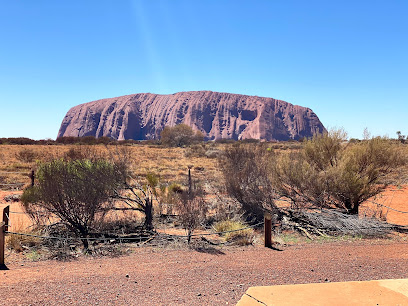
Ewing Lookout
Discover the breathtaking views at Ewing Lookout in Yulara, a perfect spot for nature lovers and photographers seeking the essence of the Australian outback.
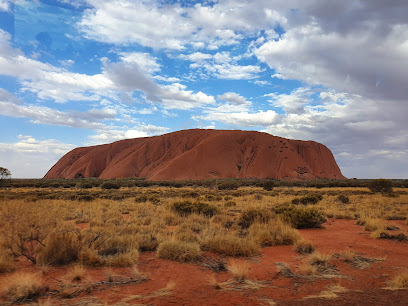
Outback BBQ & Bar
Discover the authentic taste of the Australian outback at Outback BBQ & Bar, where hearty flavors meet a vibrant atmosphere in Yulara.

Naninga Lookout
Explore the stunning vistas of the Northern Territory at Naninga Lookout, a perfect spot for capturing breathtaking views and unforgettable moments.
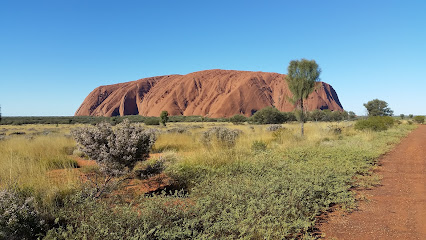
Outback Cycling Uluru
Explore the iconic landscapes of Uluru on two wheels with Outback Cycling – a unique adventure in Australia's breathtaking Outback.
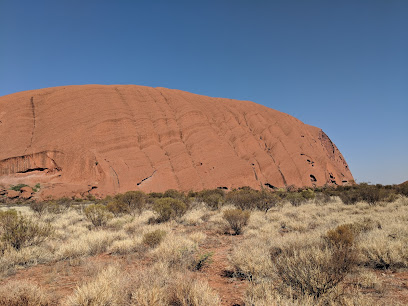
Wintjiri Wiru
Discover Wintjiri Wiru, where Indigenous culture meets the night sky in a stunning Yulara experience.
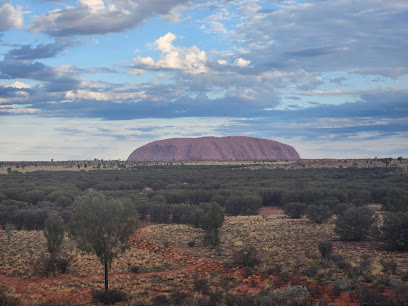
Uluru Lookout
Experience the majestic beauty of Uluru from the lookout, where breathtaking views and rich cultural significance come together in the heart of the Northern Territory.
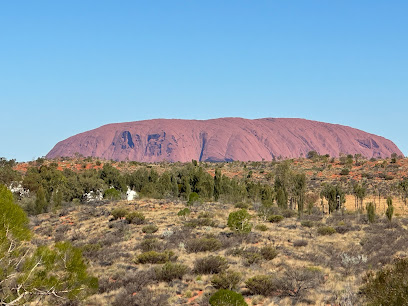
Pioneer Lookout
Discover the breathtaking panoramic views of the Australian outback at Pioneer Lookout, a serene escape for nature lovers and photographers alike.
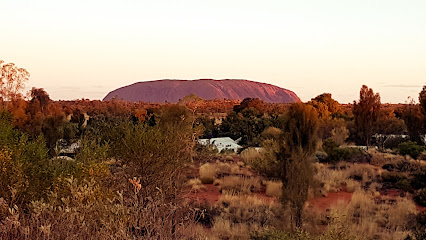
Kantju Gorge
Experience the breathtaking beauty and cultural significance of Kantju Gorge, a stunning nature preserve in Australia's Northern Territory.
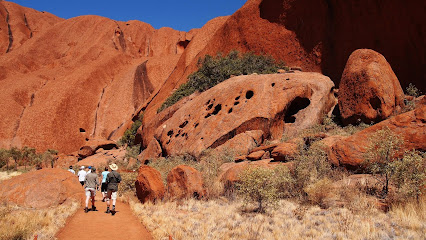
Essential places to dine
Uluṟu-Kata Tjuṯa Cultural Centre
Discover Indigenous culture at Uluṟu-Kata Tjuṯa Cultural Centre, where art meets history in Australia’s stunning Red Centre.
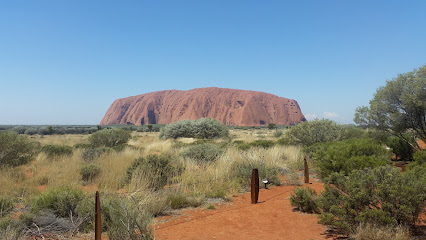
Desert Gardens Hotel - Ayers Rock Resort
Experience luxury amidst nature at Desert Gardens Hotel in Ayers Rock Resort - your gateway to Australia's iconic landscapes.

Outback Hotel & Lodge
Discover authentic outback hospitality at Outback Hotel & Lodge near Uluru – perfect for adventure seekers and cultural enthusiasts alike.

The Lost Camel Hotel - Ayers Rock Resort
Experience contemporary comfort and cultural richness at The Lost Camel Hotel in Ayers Rock Resort – your gateway to Australia's natural wonders.
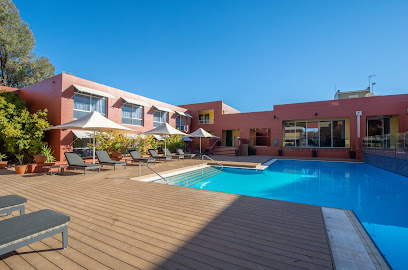
Geckos Cafe
Discover Geckos Cafe: A culinary haven in Yulara serving local flavors with warmth and hospitality amidst Australia's stunning landscapes.
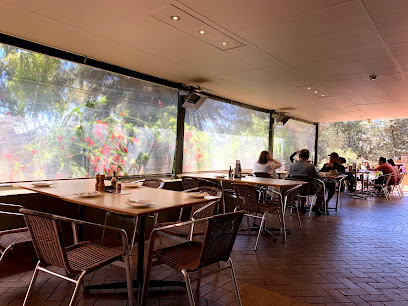
Sounds of Silence
Experience an exquisite culinary journey at Sounds of Silence, where gourmet dining meets breathtaking views in the heart of Australia's Outback.
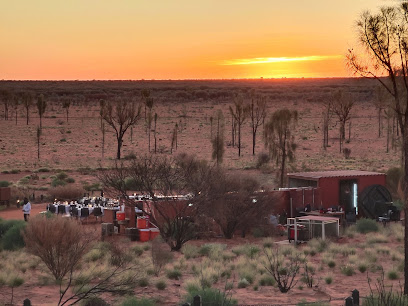
Kulata Academy Cafe
Experience authentic Australian cuisine at Kulata Academy Cafe - where local flavors meet cultural learning in Yulara.
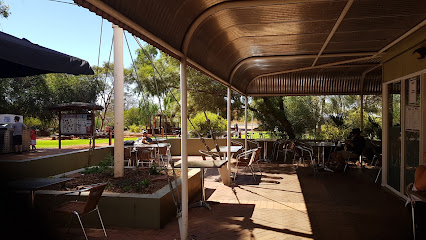
Ilkari Restaurant
Experience the rich flavors of Australia at Ilkari Restaurant in Yulara—where culinary excellence meets stunning Outback views.
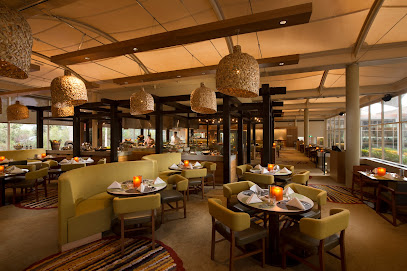
Mangata Bistro & Bar
Experience authentic Northern Territory cuisine at Mangata Bistro & Bar in Yulara – where local flavors meet vibrant atmosphere.
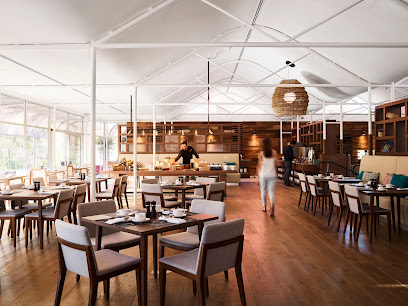
Walpa Lobby Bar
Discover Walpa Lobby Bar - your oasis in Yulara for refreshing drinks and delicious Australian cuisine amidst stunning natural beauty.

Kuniya Walk
Explore Kuniya Walk: A scenic trail that reveals the beauty and cultural richness of Uluru-Kata Tjuta National Park.
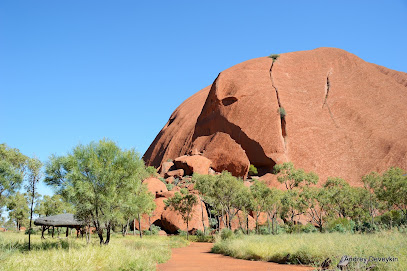
Tali Wiru
Discover a unique fine dining experience at Tali Wiru, where exquisite cuisine meets breathtaking Outback views under a starlit sky.

Uluru- Kata Tjuta National Park Entry Station
Discover Australia's natural wonders at Uluru-Kata Tjuta National Park Entry Station—your gateway to breathtaking landscapes and rich Indigenous culture.

Outback BBQ & Bar
Savor authentic Australian barbecue at Outback BBQ & Bar in Yulara—where every meal is a celebration of flavor amidst stunning outback scenery.
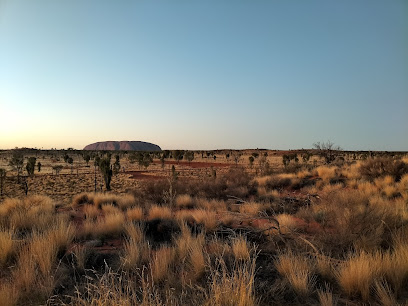
Ininti Cafe & Souvenirs
Discover culinary delights at Ininti Cafe & Souvenirs near Uluru – where exceptional food meets breathtaking views in Australia's outback.
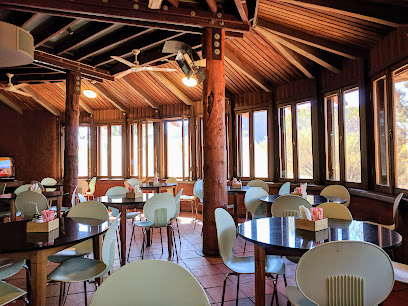
Markets, malls and hidden boutiques
Uluṟu-Kata Tjuṯa National Park
Discover the stunning landscapes and rich Indigenous heritage at Uluṟu-Kata Tjuṯa National Park, an unforgettable Australian adventure.
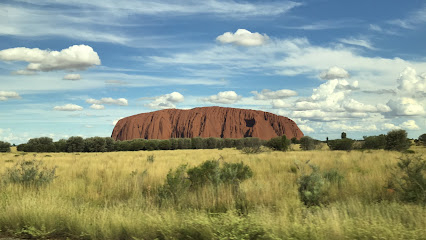
Uluṟu-Kata Tjuṯa Cultural Centre
Explore the rich heritage of the Anangu people at the Uluṟu-Kata Tjuṯa Cultural Centre, a vital cultural hub in the heart of Australia's iconic landscape.
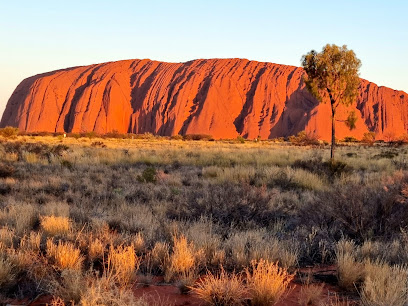
Uluru Camel Tours
Discover the Australian outback like never before with Uluru Camel Tours, offering unforgettable camel rides and cultural insights.
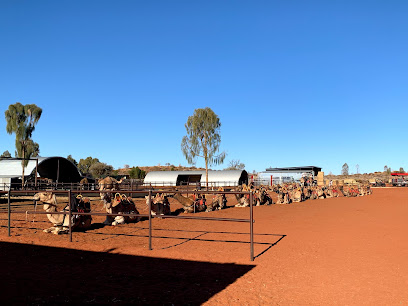
Voyages Ayers Rock Resort IGA
Discover the convenience of Voyages Ayers Rock Resort IGA, your one-stop supermarket for exploring the beauty of the Red Centre.

Kata Tjuta - Valley of the Winds
Discover the breathtaking beauty of Kata Tjuta's Valley of the Winds, a premier hiking destination rich in culture and stunning landscapes.
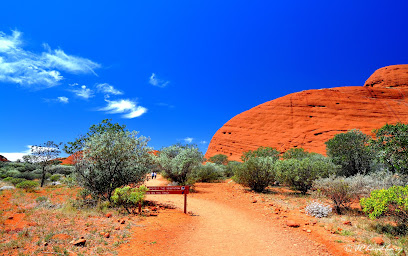
Kata Tjuṯa Dunes Viewing Area
Experience the stunning vistas of Kata Tjuṯa Dunes Viewing Area, where nature's beauty meets cultural heritage in the heart of the Australian outback.
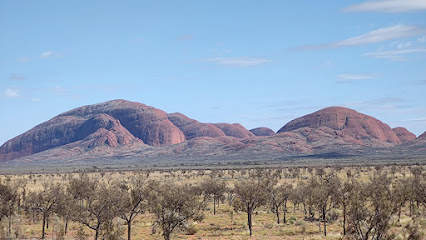
Kata Tjuta / Mount Olga
Explore the stunning Kata Tjuta, a UNESCO World Heritage site, and immerse yourself in the natural beauty and cultural significance of Australia's iconic rock formations.
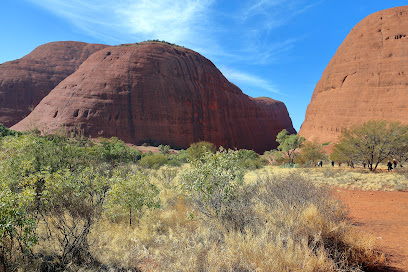
Geckos Cafe
Experience the flavors of the Australian Outback at Geckos Cafe in Yulara, where local ingredients meet vibrant dishes in a welcoming atmosphere.
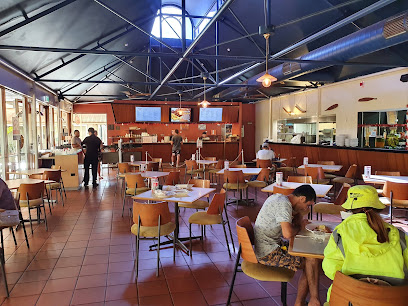
Kulata Academy Cafe
Discover the flavors of the Northern Territory at Kulata Academy Cafe, your perfect breakfast and coffee stop in Yulara.
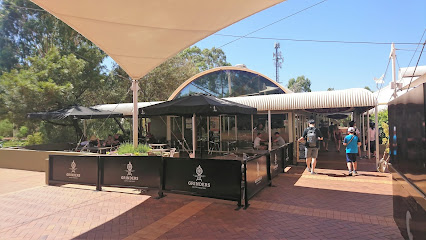
Ayers Rock Automotive
Discover exceptional automotive services at Ayers Rock Automotive, your trusted mechanic in Yulara, Northern Territory.
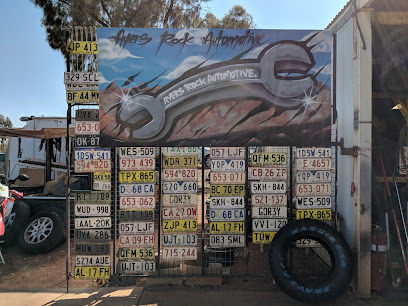
Kuniya Walk
Discover the breathtaking beauty and cultural heritage of Kuniya Walk in Uluru-Kata Tjuta National Park.

Uluru- Kata Tjuta National Park Entry Station
Discover the breathtaking beauty and cultural significance of Uluru-Kata Tjuta National Park at the Entry Station, your gateway to adventure.

Ininti Cafe & Souvenirs
Discover the flavors and artistry of the Northern Territory at Ininti Cafe & Souvenirs, a cultural gem for every traveler.
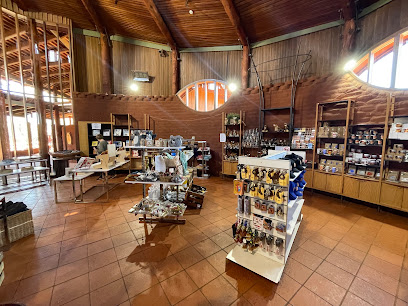
Outback Cycling Uluru
Bike your way through the breathtaking landscapes of Uluru with Outback Cycling, an unforgettable adventure in Australia's iconic Outback.
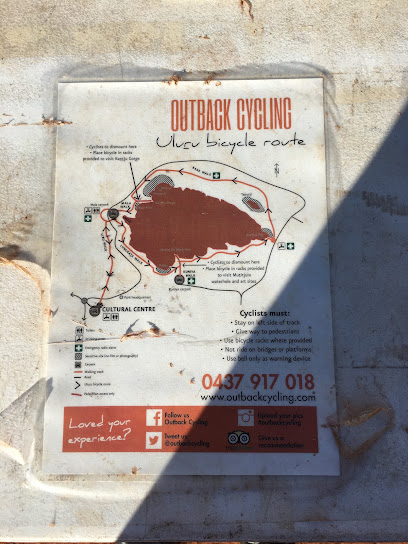
Gallery of Central Australia
Discover the vibrant art scene at the Gallery of Central Australia, where Indigenous culture and breathtaking landscapes come alive through stunning artworks.
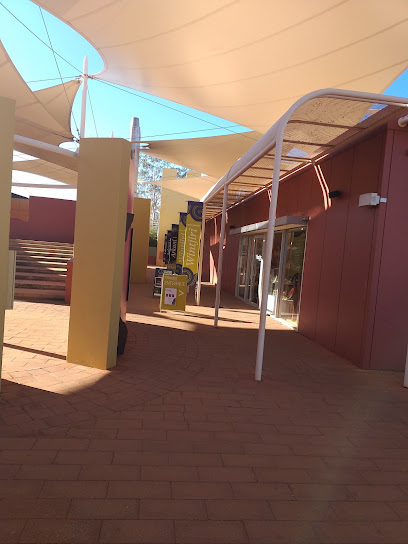
Essential bars & hidden hideouts
Uluṟu-Kata Tjuṯa National Park
Explore Uluṟu-Kata Tjuṯa National Park, a UNESCO World Heritage Site of stunning landscapes and rich cultural heritage in the heart of Australia.
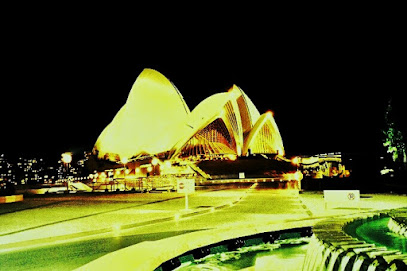
Uluṟu-Kata Tjuṯa Cultural Centre
Explore the Uluṟu-Kata Tjuṯa Cultural Centre, a gateway to the rich heritage and traditions of the Anangu people amid Australia's stunning landscapes.
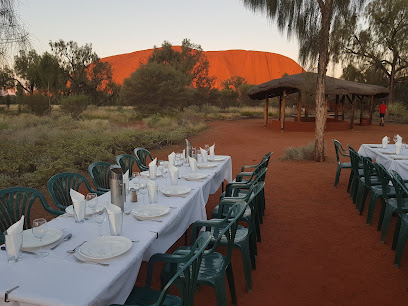
Outback Hotel & Lodge
Discover the essence of the Australian Outback at the Outback Hotel & Lodge, where rustic charm meets modern comfort amidst stunning landscapes.

Kata Tjuta - Valley of the Winds
Explore Kata Tjuta - Valley of the Winds: A breathtaking hiking adventure amidst ancient rock formations and stunning desert landscapes.
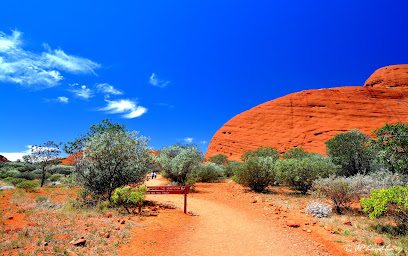
The Lost Camel Hotel - Ayers Rock Resort
Discover the enchanting Lost Camel Hotel at Ayers Rock Resort, where modern comforts meet the timeless beauty of Australia's Outback.

Kata Tjuṯa Dunes Viewing Area
Discover the breathtaking beauty of Kata Tjuṯa at the Dunes Viewing Area, an essential stop for any traveler in the Northern Territory.
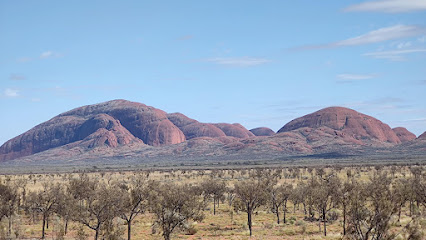
Kata Tjuta / Mount Olga
Discover the breathtaking beauty of Kata Tjuta, a stunning mountain peak rich in culture and natural wonder in Australia's Northern Territory.

Geckos Cafe
Discover the flavors of the Northern Territory at Geckos Cafe, a welcoming retreat for travelers seeking delicious meals and great coffee.

Walpa Gorge
Explore the breathtaking landscapes and cultural heritage of Walpa Gorge, a premier hiking destination in Northern Territory, Australia.
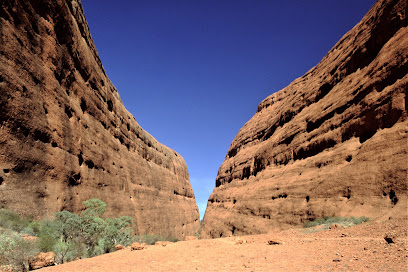
Sounds of Silence
Experience fine dining in the Australian outback at Sounds of Silence, where gourmet cuisine meets breathtaking views under a starlit sky.
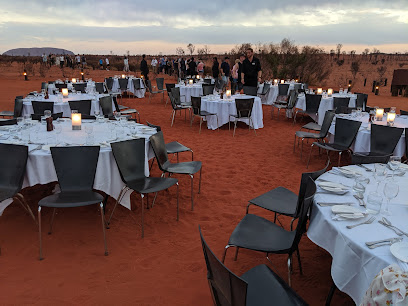
Kulata Academy Cafe
Experience the authentic taste of Australia at Kulata Academy Cafe in Yulara, featuring locally sourced ingredients and stunning views.

Ilkari Restaurant
Discover the exquisite flavors of Australia at Ilkari Restaurant, where local ingredients meet international cuisine in a stunning outback setting.
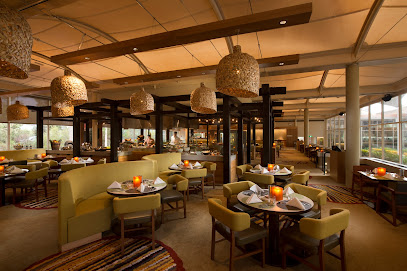
Walpa Lobby Bar
Discover the tranquil oasis of Walpa Lobby Bar, where exquisite drinks and stunning outback views unite in an unforgettable experience.
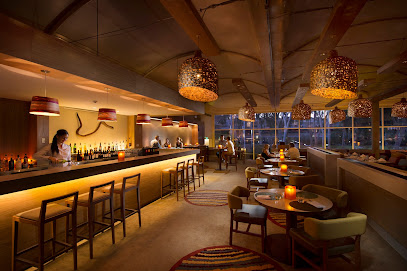
Tali Wiru
Tali Wiru: Fine dining in the heart of Uluru, where exquisite flavors meet stunning desert vistas under a canopy of stars.
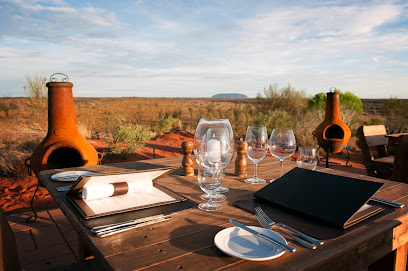
Uluru- Kata Tjuta National Park Entry Station
Experience the breathtaking landscapes and rich Indigenous culture at Uluru-Kata Tjuta National Park, Australia’s iconic natural wonder.
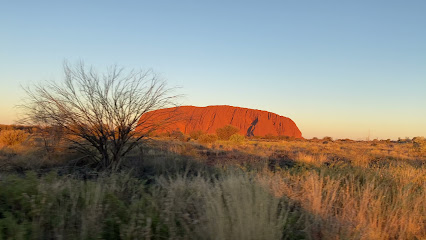
Local Phrases about Uluru-Kata Tjuta National Park
-
- HelloYipirinya
[yip-i-ri-nya] - GoodbyeWai
[wai] - YesNgayu
[ngay-u] - NoKunya
[kun-ya] - Please/You're welcomeTjungu
[tjung-u] - Thank youMaku
[ma-ku] - Excuse me/SorryKaya
[ka-ya] - How are you?Kamankara yingu?
[ka-man-ka-ra ying-u?] - Fine. And you?Ngana. Kanyini yingu?
[ngan-a. kan-yin-i ying-u?] - Do you speak English?Nganampa yaku mukuringanyi?
[ngan-amp-a yak-u mu-ku-rin-gan-yi?] - I don't understandNgayu tjuta kulintjaku
[ngay-u tju-ta ku-lin-tja-ku]
- HelloYipirinya
-
- I'd like to see the menu, pleaseNgayu tjuta munu, palya
[ngay-u tju-ta mu-nu, pal-ya] - I don't eat meatNgayu tjuta yanama
[ngay-u tju-ta ya-na-ma] - Cheers!Palya!
[pal-ya!] - I would like to pay, pleaseNgayu tjuta nyinypa, palya
[ngay-u tju-ta nyi-ny-pa, pal-ya]
- I'd like to see the menu, pleaseNgayu tjuta munu, palya
-
- Help!Palya!
[pal-ya!] - Go away!Wai!
[wai!] - Call the Police!Nganampa tjamu Polis
[ngan-amp-a tja-mu Po-lis] - Call a doctor!Nganampa tjamu munu
[ngan-amp-a tja-mu mu-nu] - I'm lostNgayu tjuta palu
[ngay-u tju-ta pa-lu] - I'm illNgayu tjuta munu
[ngay-u tju-ta mu-nu]
- Help!Palya!
-
- I'd like to buy...Ngayu tjuta wiya...
[ngay-u tju-ta wi-ya...] - I'm just lookingNgayu tjuta ngarlaka
[ngay-u tju-ta ngar-la-ka] - How much is it?Ngayu tjuta minyma?
[ngay-u tju-ta mi-ny-ma?] - That's too expensiveNgayu tjuta tjamu palunya
[ngay-u tju-ta tja-mu pa-lun-ya] - Can you lower the price?Nganampa yaku palya munu
[ngan-amp-a yak-u pal-ya mu-nu]
- I'd like to buy...Ngayu tjuta wiya...
-
- What time is it?Mukuringanyi nyinami?
[mu-ku-rin-gan-yi nyin-a-mi?] - It's one o'clockNyinami wiya
[nyin-a-mi wi-ya] - Half past (10)Nyinami palya (10)
[nyin-a-mi pal-ya (10)] - MorningNgura palya
[ngu-ra pal-ya] - AfternoonNgura kanyini
[ngu-ra kan-yin-i] - EveningNgura wati
[ngu-ra wa-ti] - YesterdayNgayi
[ngay-i] - TodayNyinami
[nyin-a-mi] - TomorrowNgura
[ngu-ra] - 1Wanma
[wan-ma] - 2Yanama
[ya-na-ma] - 3Yurrkuru
[yur-kur-u] - 4Wanti
[wan-ti] - 5Pinya
[pin-ya] - 6Tjilpi
[tjil-pi] - 7Wakal
[wa-kal] - 8Manu
[ma-nu] - 9Kunka
[kun-ka] - 10Purkara
[pur-ka-ra]
- What time is it?Mukuringanyi nyinami?
-
- Where's a/the...?Nganampa wiya...
[ngan-amp-a wi-ya...] - What's the address?Nganampa winyira?
[ngan-amp-a wi-nyi-ra?] - Can you show me (on the map)?Nganampa yaku palya munu?
[ngan-amp-a yak-u pal-ya mu-nu?] - When's the next (bus)?Nyinami tjamu (bus)?
[nyin-a-mi tja-mu (bus)?] - A ticket (to ....)Munu (towards ....)
[mu-nu (to-wards ....)]
- Where's a/the...?Nganampa wiya...
History of Uluru-Kata Tjuta National Park
-
Uluru and Kata Tjuta are ancient geological formations that have been shaped over millions of years. Uluru, also known as Ayers Rock, is a massive sandstone monolith that stands 348 meters high, while Kata Tjuta, also known as the Olgas, comprises 36 domed rock formations. These structures were formed through processes of erosion and weathering, which began over 600 million years ago when the area was part of an inland sea.
-
Uluru and Kata Tjuta hold immense spiritual significance for the Anangu people, the traditional owners of the land. These sites are central to Tjukurpa, or Dreamtime, the foundational belief system that encompasses law, religion, and moral codes. Various Dreamtime stories explain the creation and significance of Uluru and Kata Tjuta, often linked to ancestral beings who traveled across the land, shaping its features.
-
The first European to sight Uluru was the explorer William Gosse in 1873. He named it Ayers Rock in honor of Sir Henry Ayers, the then-Chief Secretary of South Australia. Kata Tjuta was named the Olgas by the explorer Ernest Giles in 1872 after Queen Olga of Württemberg. These names were used for over a century until the dual naming system was introduced.
-
Uluru-Kata Tjuta National Park was established in 1958 to protect the unique geological formations and their cultural significance. The park is recognized as a UNESCO World Heritage site for both its natural and cultural values. The traditional owners, the Anangu, play a crucial role in the park's management, ensuring that it is preserved for future generations.
-
In 1985, the Australian government formally returned ownership of Uluru and Kata Tjuta to the Anangu people. This historic event marked a significant step in recognizing the rights and cultural heritage of Australia's Indigenous peoples. The land was then leased back to the government for 99 years, allowing it to continue operating as a national park with joint management between the Anangu and Parks Australia.
-
Climbing Uluru has been a contentious issue due to its spiritual significance to the Anangu people. Despite the Anangu's repeated requests for visitors not to climb, the practice continued for many years. In 2019, a permanent ban on climbing Uluru was imposed, reflecting the growing respect for Indigenous culture and the importance of preserving sacred sites.
Uluru-Kata Tjuta National Park Essentials
-
Uluru-Kata Tjuta National Park is located in the Northern Territory of Australia. The nearest airport is Ayers Rock Airport (Connellan Airport), which is about a 20-minute drive from the park. Regular flights are available from major cities such as Sydney, Melbourne, and Cairns. Alternatively, you can fly into Alice Springs Airport and take a scenic 4.5-hour drive to the park. There are also coach tours and self-drive options if you prefer to travel by road.
-
Within Uluru-Kata Tjuta National Park, the best way to get around is by renting a car. This gives you the flexibility to explore the park at your own pace. Shuttle services and guided tours are also available for those who prefer not to drive. Bicycles can be rented for a unique way to explore the area. Walking trails are well-marked and offer various levels of difficulty for all types of hikers.
-
The official currency in Australia is the Australian Dollar (AUD). Credit cards are widely accepted in hotels, restaurants, and shops within and around the park. ATMs are available at the Ayers Rock Resort and in Yulara village, but it is advisable to carry some cash for smaller purchases and remote areas where card payments may not be accepted.
-
Uluru-Kata Tjuta National Park is generally a safe destination for tourists. However, it is essential to take standard precautions. Always stay on marked trails and avoid wandering off into the desert. Be cautious of wildlife, particularly snakes. There are no specific high-crime areas targeting tourists, but it is always best to stay vigilant and aware of your surroundings.
-
In case of an emergency, dial 000 for immediate assistance. The Ayers Rock Medical Centre provides healthcare services, and there are first aid stations within the park. It is recommended to have travel insurance that covers medical emergencies. For minor health issues, pharmacies are available in Yulara village.
-
Fashion: Do wear light, breathable clothing suitable for hot weather and sturdy walking shoes. Don't forget a hat and sunscreen to protect against the strong sun. Religion: Do respect the cultural significance of Uluru to the Indigenous Anangu people. Don't climb Uluru, as it is considered sacred. Public Transport: Do use shuttle services and guided tours if not renting a car. Greetings: Do greet locals with a friendly 'Hello' or 'G’day.' Eating & Drinking: Do try local Australian cuisine and bush foods. Don't litter; always clean up after yourself to preserve the natural environment.
-
To experience Uluru-Kata Tjuta National Park like a local, join a guided tour led by an Indigenous ranger to learn about the Anangu culture and the park's history. Visit during sunrise or sunset for breathtaking views and fewer crowds. Participate in cultural workshops to learn traditional crafts and stories. Don't miss the Field of Light art installation for a mesmerizing nighttime experience.
Trending Landmarks in Uluru-Kata Tjuta National Park
-
Uluṟu-Kata Tjuṯa National Park
-
Uluru
-
Uluṟu-Kata Tjuṯa Cultural Centre
-
Talinguṟu Nyakunytjaku - Uluṟu Sunrise Viewing Area
-
Field of Light Uluru
-
Uluṟu Sunset Viewing Area
-
Uluru Camel Tours
-
Uluṟu Coach Sunset Viewing Area
-
Kata Tjuta - Valley of the Winds
-
Kata Tjuṯa Dunes Viewing Area
-
Karu lookout
-
Kata Tjuta Viewing Area Carpark
-
Imalung Lookout
-
Uluru Segway Tours
-
Ewing Lookout
Nearby Cities to Uluru-Kata Tjuta National Park
-
Things To Do in Adelaide
-
Things To Do in Kangaroo Island
-
Things To Do in Darwin
-
Things To Do in Cairns
-
Things To Do in Port Douglas
-
Things To Do in Suai
-
Things To Do in Airlie Beach
-
Things To Do in Same
-
Things To Do in Melbourne
-
Things To Do in Bobonaro
-
Things To Do in Lospalos
-
Things To Do in The Whitsundays
-
Things To Do in Aileu
-
Things To Do in Baucau
-
Things To Do in Ermera


